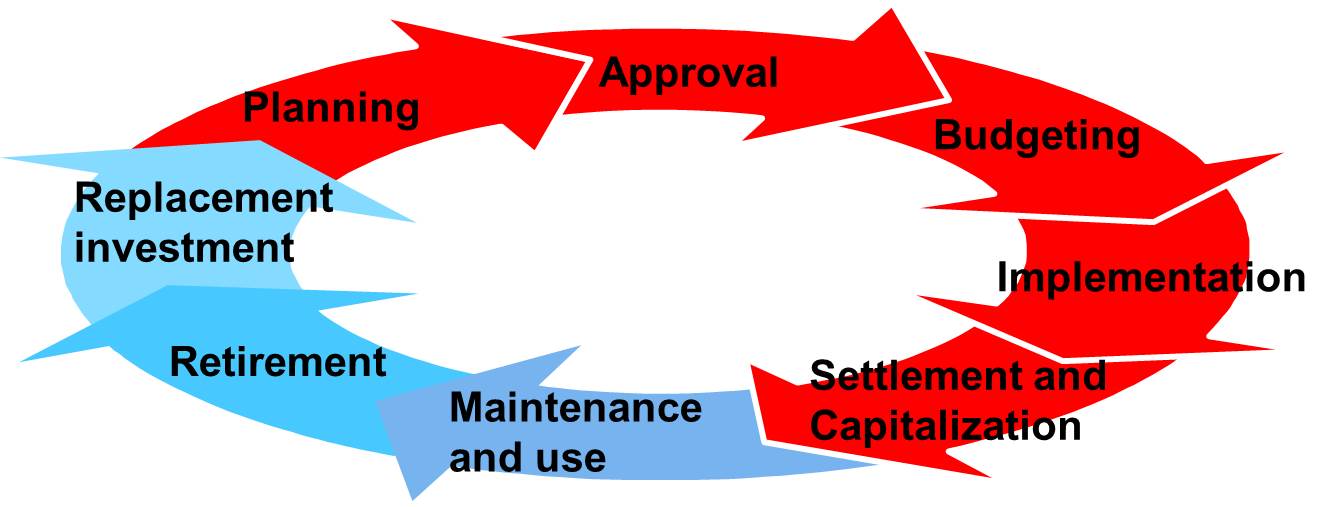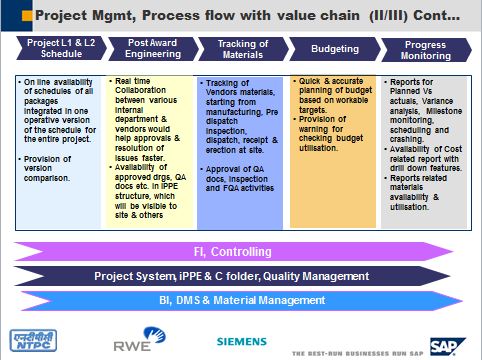
- SAP Community
- Products and Technology
- Enterprise Resource Planning
- ERP Blogs by SAP
- Running capital projects with SAP
- Subscribe to RSS Feed
- Mark as New
- Mark as Read
- Bookmark
- Subscribe
- Printer Friendly Page
- Report Inappropriate Content
Construction is a very relevant process in Asset Management. In fact, it is the most relevant from the corporate budget perspective (capital expenses are used in the process) as maintenance use to have a fixed budget and the expense is operational. From the IT support perspective Construction is a more complex scenario, think for example new connections management or the construction of a power plant. From the other side of the coin, maintenance has more relevance from the branding perspective as to avoid outages and keep the infrastructure working at optimal cost.
When discussing on how SAP can help organisations to manage this process, Solution Architects face the challenge of understanding the complex requirements and identifying which are the right components which may help companies to run effectively and simple such processes. Relevant example is building a new substation while the most can be identified in New Connections, which is in fact a very complex workflow across different departments with an average of thirty variants in the case of having only one energy (electricity, water or gas) such as increase capacity for a premise, building or location, new developments (building and construction sites) and may even include some commercial steps.

- Corporate Assets lifecycle. In red the scope of this text
Overall solution breakdown
Three major areas are identified to cover such process: Long term Planning, Mid Term Planning and Detailed Planning and Execution. Each of these areas have several dedicated processes which are very much influenced on the degree of contribution of internal resources: would this be a turn key project (this is all done by external contractor), by internal resources (both labor and material) or a mixed approach as can be seen at the below copied snapshot of a case study?.

2.Case Study NTPC Project (India) – ‘Concept to Commissioning’ Scenario
Depending on these requirements, the overall solution proposed may balance from the usage of sophisticated purchasing solutions like Ariba or SRM to a more Engineering Approach where the solution should be more related with PLM application portfolio. In both cases, the backbone of the solution is Project System (PS) solution, where detailed Resource Planning, Cost Planning, Approvals and Scheduling & Dispatching of activities is performed. Execution of the activities are performed using Work Orders for Construction. This picture may ilustrate from the object – datamodel perspective how the process data flows:

3.Project and Program Planning: High Level Architectural View (green objects located in ERP)
This picture shows a process based in the usage of internal resources and does not reflect the integration with purchasing systems (MM, SRM, Ariba), which may increase complexity of the flow diagram. It does not mean that is not relevant as, for example, many projects are assigned by Tendering processes (Request For Purchasing) or “hybrid” scenarios, such as hiring contractors but providing own materials are very regular.
Investment management or Portfolio Management?
As highlighted previously, the central element of the Business Scenario is the Project System and it has to syncronize its activities with the Budget: where does it come from, how is it validated, where is an ivestment decision allocated?. In this stage, Solution Architects have to suggest which is the correct olution to support the budget and investment process and how feasible is for the organisation. Two choices, complementary, exist: Investment (funds) management and Portfolio Management.
As can be seen at the picture above, the decision on suggesting Investment Management (IM) only may have a clear impact in the implementation effort as it is part of the ERP functionality and enable project effort to build a consistent Project System fully integrated with other ERP elements. For companies currently approaching this process (not companies already using SAP ERP) this is a very simple and effective way of implementing such critical process and, for an initial stage, IM may contain enough functionality for Investment and Budget Management:

4.Investment Management: Process Flow and SAP Objects
Therefore, an implemention roadmap based in a “two or even three steps” approach for Capital Projects is the average suggestion by solution architects: First phase a critical baseline scope being PS and IM as can be seen at the picture above copied below being a second step Portfolio Management to improve, record and track decisions. This component, named SAP Portfolio and Project Management enables Managers the linking of ideas and strategies with project data, workflows, and business processes. It becomes a structure above the project System to Manage scope, timeline, and budget of projects in an integrated way enabling cash flow tracking and high level control of the execution and progress of projects.

5. Portfolio Management: how it integrates with Project System
Work Orders – Compatible Units
Additional phase, a third one, has been indentified in the area of project execution. This is the integration among the engineering department and the works execution. Designers and engineers need to define and estimate quickly and efficiently the work to be performed. On this purpose there is a functionality available in the ERP called Compatible units (CU) which combine standardized and repetitive units of work for a certain technical object (e.g. Install, Repair, Replace 40ft Pole) by combining Labor (what, who, qualification, how long), Materials, Tools, Costs, Resources External / Internal and Accounting Rules.

6. Case Study at ESB: Usage of Compatible Units in the construction workflow
Additional subjects to be considered prior the Reconciliation of Materials & Expenditure and Contract closing are the reporting and the asset commissioning.
While Business Intelligence platform may favour a management analysis of consolidated project view and comparison, detailed analysis is already available in ERP instance, like Project Plan versus Actuals. Asset Commissioning has two dimensions which can be automatized in the process workflow: capitalisation of assets (create the corresponding Financial Asset ready for depreciation process) and Creation of the Technical Asset with all its relevant data for maintenance and operations (Take over – Hand over of data).
- SAP Managed Tags:
- Utilities,
- PLM Enterprise Asset Management (EAM)/Plant Maintenance (PM)
You must be a registered user to add a comment. If you've already registered, sign in. Otherwise, register and sign in.
-
Artificial Intelligence (AI)
1 -
Business Trends
363 -
Business Trends
23 -
Customer COE Basics and Fundamentals
1 -
Digital Transformation with Cloud ERP (DT)
1 -
Event Information
461 -
Event Information
24 -
Expert Insights
114 -
Expert Insights
158 -
General
1 -
Governance and Organization
1 -
Introduction
1 -
Life at SAP
415 -
Life at SAP
2 -
Product Updates
4,684 -
Product Updates
219 -
Roadmap and Strategy
1 -
Technology Updates
1,502 -
Technology Updates
89
- FAQ on Upgrading SAP S/4HANA Cloud Public Edition in Enterprise Resource Planning Blogs by SAP
- Run Revenue recognition - Projects job - Is it possible to run the job and post in the 2 ledgers in Enterprise Resource Planning Q&A
- SAP S/4HANA Cloud Extensions with SAP Build Best Practices: An Expert Roundtable in Enterprise Resource Planning Blogs by SAP
- Deep Dive into SAP Build Process Automation with SAP S/4HANA Cloud Public Edition - Retail in Enterprise Resource Planning Blogs by SAP
- Speeding up your SAP HCM move to the cloud in 2024 in Enterprise Resource Planning Blogs by SAP
| User | Count |
|---|---|
| 13 | |
| 11 | |
| 10 | |
| 7 | |
| 7 | |
| 6 | |
| 5 | |
| 5 | |
| 4 | |
| 4 |